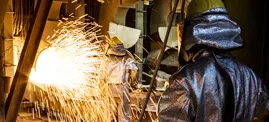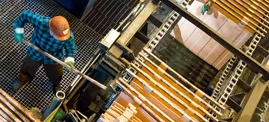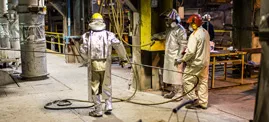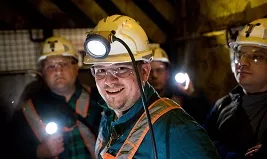KGHM is an innovator that applies environmentally friendly technologies and business solutions. It follows international environmental standards and cooperates with government authorities to improve living standards and protect natural resources in the regions where it operates. Moreover, in accordance with the principles of its corporate CSR policy, KGHM acts to ensure safe working conditions and maintains technical infrastructure in proper working order. In this way, KGHM is able to reduce the number of incidents and failures which could negatively impact the environment,.
An example of KGHM's demonstration of its responsibility for the environment are the actions we have taken to reduce the company’s environmental impact in line with the guidelines set forth in our CSR and Business strategies. As an ecological innovator, KGHM is consistently involved in initiatives that apply environmentally friendly and low-emission technologies. One of the most advanced projects being pursued at the moment is the construction of two gas-steam blocks near the company’s operations in Poland in the towns of Polkowice and Głogów. The gas-fired steam blocks will produce electrical energy and heat more cheaply and cleanly than conventional coal-fired plants. As a result, natural gas consumption as well as dust and gas emissions to the atmosphere will be reduced. The company is also reducing emissions by installing a modern flash furnace at the Głogów copper smelter and refinery.
As part of its environmental activities, KGHM in recent years has modernised the electrical system of its Rudna mine and, as a result, the new Deep Głogów mining section is powered by an energy-saving 1000V installation . The company is continuing to invest in innovative and renewable sources of energy. Currently, in the areas directly impacted by the Głogów copper smelter/refinery in Poland, KGHM is growing so-called energy willows (salix viminalis). In the vicinity of the Głogów and Legnica copper smelter/refineries, photovoltaic farms are under construction. In the neighbouring communes of Radwanice and Żukowice the construction of two wind power plants is planned. The predicted energy production from these farms will amount to around 3.5% of the compan’s power needs.
The environmental innovations of KGHM are directed at effective waste management and reclamation as well as maintaining biodiversity in areas where mining has ceased. At the Żelazny Most tailings pond, the beach surrounding the pond is systematically stabilised with an emulsion to prevent wind-blown dust.
Additionally, projects that aim at reforestation of protection zones around the smelters have been planned on a large scale. The return of the peregrine falcon to the forests around Głogów is undoubtedly a huge success.





